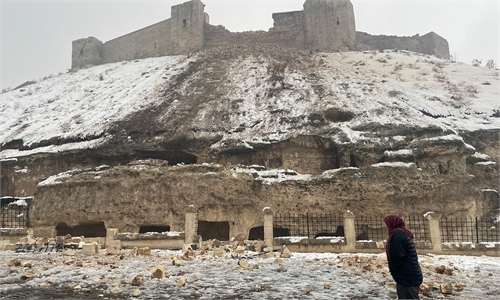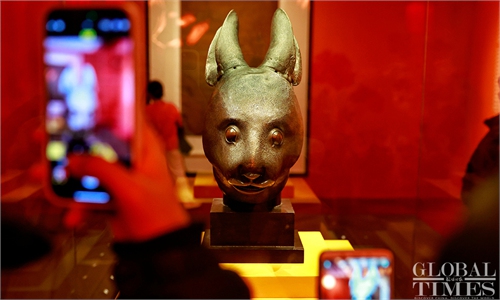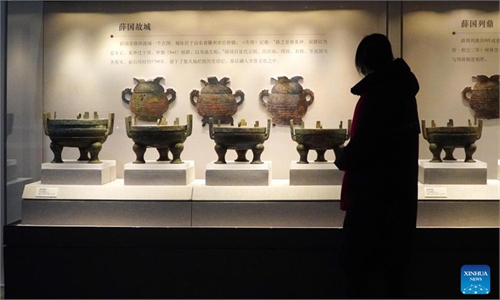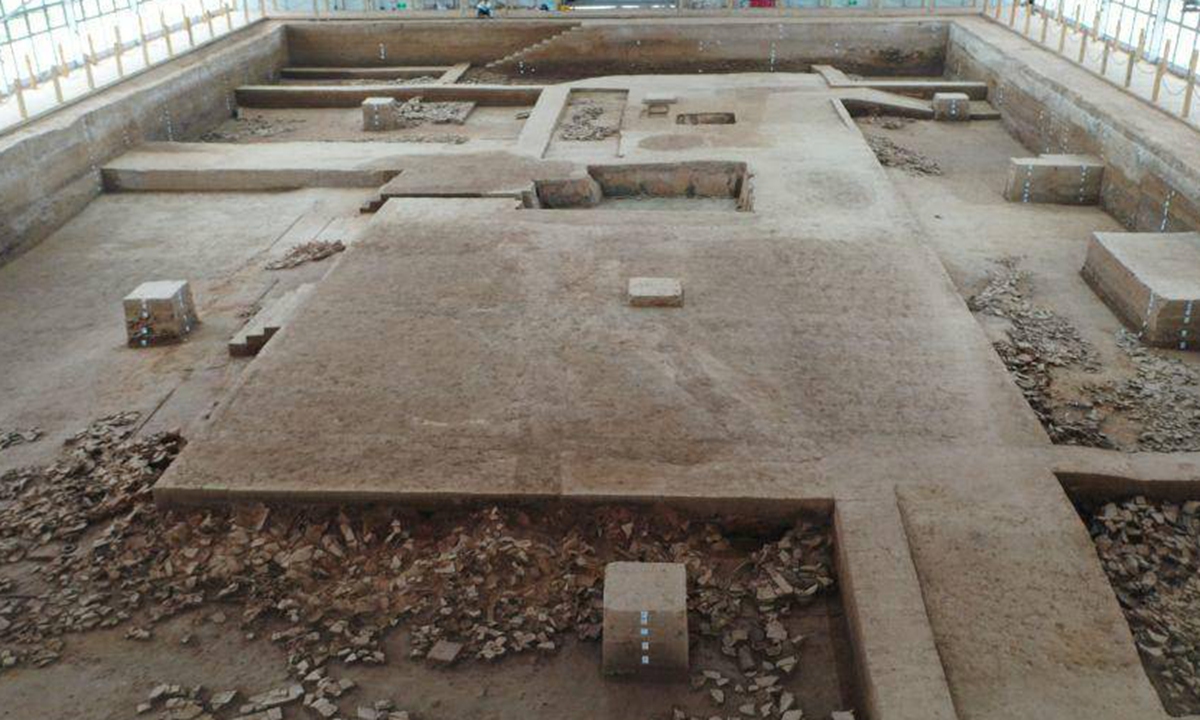
The No.3 Ancient Building at the Yueyang City Ruins in Northwest China's Shaanxi Province.Photo:Sina Weibo
A pottery toilet ancient Chinese used during the Qin Dynasty (221BC-206BC) has been discovered at the Yueyang City Ruins in Northwest China's Shaanxi Province.
The ancient relic consists of two parts, an indoor toilet on a platform and a pipe system below that directed sewage outside.
The discovery was made by experts excavating the No.3 Ancient Building at the Yueyang City Ruins. While the upper structure of the device has not been found, Fan Mingyang, a design expert specializing in ancient agricultural tools, told the Global Times that the Qin Dynasty toilet looks "deceptively advanced" as it seems to have had a flush water drainage system akin to modern toilets.
The discovery is the only "toilet" to have been discovered at an ancient Chinese palace archaeological site. Archaeologist Xue Feng told the Global Times that the discovery reflects the lifestyle and social landscape of the ancient capital city of the Qin State.
Prior to the discovery, two large palace buildings, No.3 and No.11, were excavated at the site. The two buildings date to a time period stretching from the Warring States Period (475BC-221BC) to the Qin (221BC-206BC) and Han (206BC-AD220) dynasties.
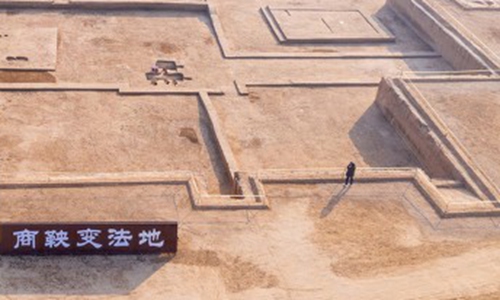
The Yueyang City Ruins in Northwest China's Shaanxi Province.Photo:IC
Typical of ancient Chinese buildings, the two rectangular buildings faced south. According to Liu Rui, a researcher at The Institute of Archaeology, four wadang, a type of tile used to decorate a building's eaves, were also discovered at the northwest, northeast, southwest and southeast corners of the building No.3."The locations provide important data for solving an academic debate concerning where ancient people installed wadang," Liu noted.
Located in the Yanliang district of Yueyang, the Yueyang City Ruins were the capital of the Qin State for more than 30 years, before the capital moved to Xianyang, also in Shaanxi Province, during the Qin Dynasty. The Reforms of Shang Yang, a political movement that powered the rise of the Qin state, also occurred at the Yueyang site.
There are a total of 15 architectural sites at the Yueyang City Ruins. They make excellent references for research into the "urban planning" of the Qin State.
According to exploration and excavation data, Liu said that researchers have discovered a north-south axis through the entire No. 3 palace building. The discovery holds value for studying the architectural layout of the ancient Qin capital.
